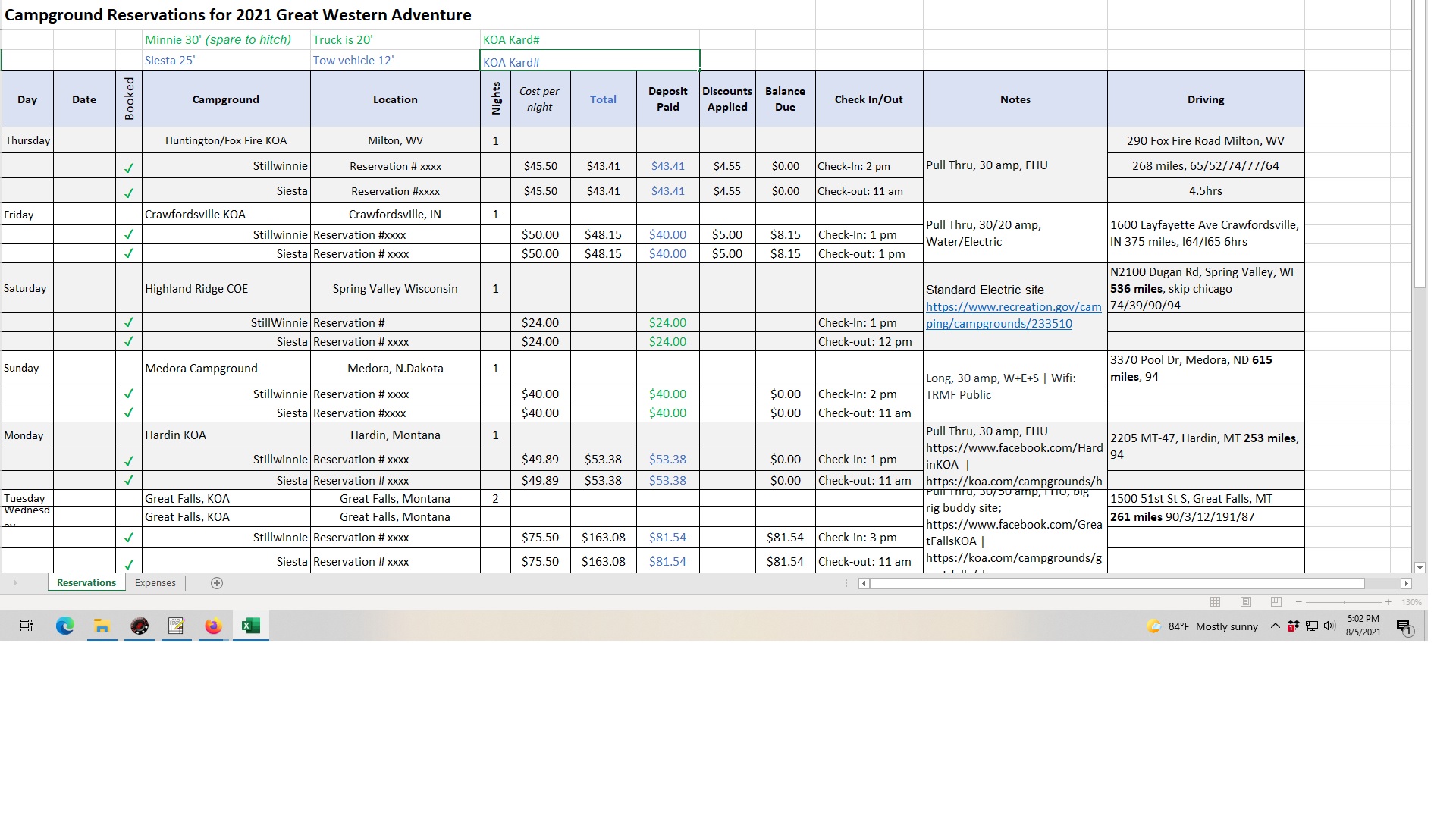“Hey, let’s go to Montana to see Thing 1.” “OK!” and with that the decision to drive about 5000 miles was made. For some this inspires romantic visions of faraway places followed by the ordering of travel guides with lots of pictures. For the rest of us it’s time to assess the amount of planning and logistics that will necessarily follow.
Planning a long trip with Covid in full swing may seem counterintuitive, but our camping experiences in 2020 revealed the opposite. When you carry your own bathroom, shower, kitchen, bedroom and dining area with you and focus on outdoor activities closures hardly matter. Everyone else figured this out too, national parks and campgrounds are crowded and RV manufacturers can’t keep up.
Our eventual destination was Yellowstone by way of Glacier, therefore these were the first reservations we made, a full 11 months and 2 weeks in advance. Even with that lead time sites weren’t plentiful and at 30′ long plus our truck the number of sites that would accommodate our rig was already limited. Yellowstone was the geographic point from which we planned our trip, not our home.
Divide and Conquer
I’m pretty handy with spreadsheets and details, but the female half of the couple who are joining us in their Class C is at least as proficient if not more so. From our starting point at Yellowstone we began working as a team, each randomly taking a leg along our route that interested us. Attractions along the way were given some consideration as well, but with apologies to several beautiful states we stayed focused on maximizing the time at our destination. As reservations were made we added the addresses of the campgrounds, reservation numbers and any pertinent details to our spreadsheet. Many places we picked were already booked, some had rolling reservation windows so we had to wait those out.

It took a couple months, but we eventually booked every night of our trip. Between all the new RV’ers on the road, summer vacations and Labor Day weekend campers it seemed prudent. We didn’t keep up with the time we spent, but if it was only 1/2 hour per reservation that’s 9 hours, the reality was much more. Granted, to some of us this isn’t work, but don’t tell our partners.
-A
0 Comments